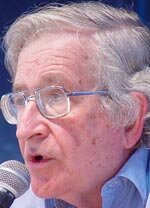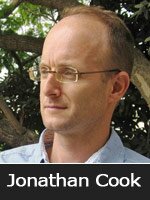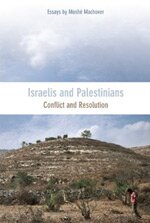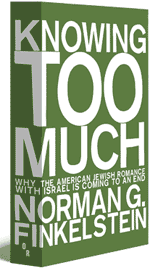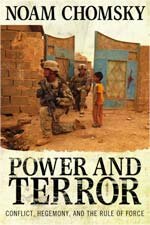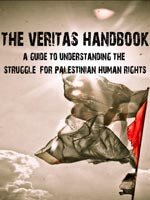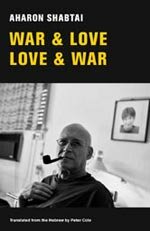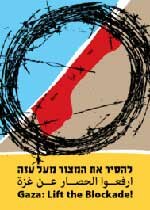By Gideon Levy, Haaretz – 19 Oct 2009
www.haaretz.com/hasen/spages/1121396.html

Gideon Levy
Take a look at the shameful photograph on this page. The stump of an olive tree wrapped in sackcloth, one branch reaching up to the sky as though crying out to heaven. The earth around this violent environmental sculpture is brown, cultivated, furrowed, cleared of stones, fertile – but it looks wounded and bloody now. The sackcloth looks like a shrouds.
Dozens of other stumps can be seen in the background, while behind them, the trees the buzz saws didn’t reach are turning green. A neighboring farmer, Afif Shehadah, dresses his own mutilated trees with white lime, but retired agriculture teacher Mohammed Abu Awad preferred sackcloth to protect his stumps from the blazing sun and cover up the disgrace, in the hope that in six years time, at the earliest, they will recover from their wounds, come alive again, and once more bear fruit.
It happened in the village of Mureir in late September, on the night before the second Friday of the month of Ramadan, on the eve of the olive-picking season, a particularly monstrous choice of timing. A gang of settlers, driving Jeeps or ATVs – nobody actually saw them – and armed with their diabolical buzz saws, descended on the groves, and there it was – another mini-pogrom for the sake of the Land of Israel and the glory of the Jewish state. All signs indicate that they came from the illegal outpost of Adei Ad (For Always), located on a nearby hilltop.
The trees were 35 years old, planted by the teacher Abu Awad with his own hands – the best Palestinian olives. Now he plucks a bough that survived, a refugee from the disaster, and shows us the abundance of olives hanging from it, like a father proud of his kids. How much love Abu Awad the farmer heaped on his trees, how proud he was of his grove and his land. And how much hatred and cruelty blazed out of the violent criminals who cut the trees down. With one swing of the saw after another, they carried out this atrocity, savaging one tree after the other, hardly missing a single branch, these terrorists whom no one even begins to think of bringing to justice, in this land of occupation and lawlessness.
The saws buzzed, and the grove was gone. The crop has gone, the money has gone, decades of work have gone, pride has gone, love has gone. In their place, fury has come, a sense of deep insult, and contempt for those who did this thing.
You drive through Turmus Aya, a peaceful Palestinian village in the heart of the West Bank between Ramallah and Nablus, with large, handsome houses many of whose inhabitants have moved to the United States – and you come to Mureir. Here, too, there are magnificent homes with stone facades, like the three belonging to the Na’asan family, most of whose members own grocery stores in Chicago. Only one son, Muntasar, has remained to take care of the family’s summer homes and work the land. Joining us for coffee, served in small colored cups, is the teacher and farmer Abu Awad, who lives in Turmus Aya and whose groves are in Mureir.
Here is a brief history of Abu Awad’s lands: 20 acres were taken from him for the construction of the settlement of Shiloh; the settlement of Rahelim meant the loss of another 25 acres. All that remains is the grove in Muneir, four acres of olives and almonds. Now 68, he has taught agriculture and love of the land his whole life. Since retiring, he has spent most of his time cultivating his grove. The grove that was.
“I love the soil, I am in love with it,” says Abu Awad with twinkling eyes, but his expression changes suddenly: “I am not afraid of them. If they want to kill me, let them. This is my land. I sleep on it.”
But that night, on September 25, he wasn’t sleeping there. The next morning, neighbors called to tell him his trees had been cut down. “My eyes filled with tears,” he says. “I planted them 35 years ago. What must you feel if you plant and tend and then it’s all cut down? What must I feel? If I had been there, I’d have told them, cut off my hands, but don’t cut down my trees. If they had been saplings, I would have been angry. But 35-year-old trees? You can go crazy. I am losing my mind. What did the tree do to them, for them to treat it like this?”
Abu Awad lost 70 olive and 10 almond trees in the pogrom. A neighbor, Sudki Abu Aleiah, lost 120 olive trees. The Shehadah family lost 120 olive and 20 fig trees. Altogether, 340 fruit trees were cut down in one night of savagery.
The harvested wheat fields can be seen in the valley below, dark brown in the autumn sunlight, and in between there’s a green olive grove. The destroyed groves are on the other side of the hill, and we ride there in Muntasar’s Jeep. Zachariah Sadeh, the director of field operations for Rabbis for Human Rights, an organization that tries to protect Palestinian farmers from settlers, tells us on the way that the olive-picking season, which began here a week before, is actually going ahead quietly, under the watchful eyes of Israeli soldiers who are this year guarding the pickers properly. This is why the raid took place before the actual picking began. The Palestinian police are totally occupied with capturing Hamas activists, as Israel has demanded, and it certainly doesn’t provide the locals with any protection.
The handful of houses of Adei Ad can be seen on a hilltop. The Jeep bumps over the furrows in the valley. A short trip through the groves, and the site of the atrocity comes into view. The manicured groves give way to rows of sawed-down trees. One stump after the other, covered with sacking or painted white with lime. The poorly-clad farmer Afif Shehadah stands next to his plot of land, looking sadly at the whitewashed remnants of his trees. He has eight children at home, and the trees were his only livelihood. He came here this morning only to be with them, he says. Unlike his neighbor, Abu Awad, he has not yet cleared away the sawn-off branches; they lie at the foot of the tree stumps, a pile of branches next to each one, yellowing and withering. A dirt track descends from the hill that hides Adei Ad from our sight. This week, there were news reports that instructions for the manufacture of explosive devices were found at this settlement and others.
Abu Awad estimates the damage he sustained at about 2,400 Jordanian dinars, over NIS 10,000, or about $2,500. But it is not a matter of money. He shows us how he planted his trees in very precise diagonal lines, in what he calls the “duck’s foot” pattern. He comes up with another metaphor for his once-beautiful grove: “It is like an umbrella,” he says. “These are the best trees in the region. I don’t have one good crop and one bad one. For me, every year has been a good one, because I tended my trees carefully.” On one of the stumps, a single branch has survived, torn and twisted sideways. Abu Awad cuts it off and hands it to us as a memento. An olive branch from a tree that has been cut down. There are tears in his eyes.




















